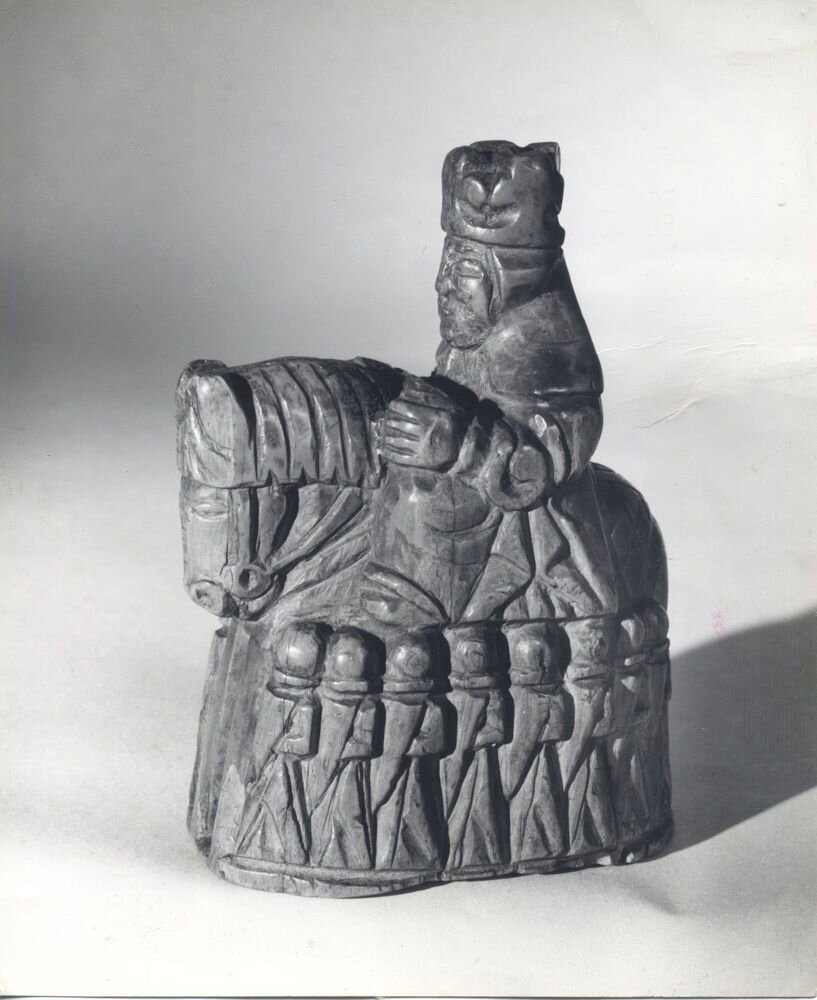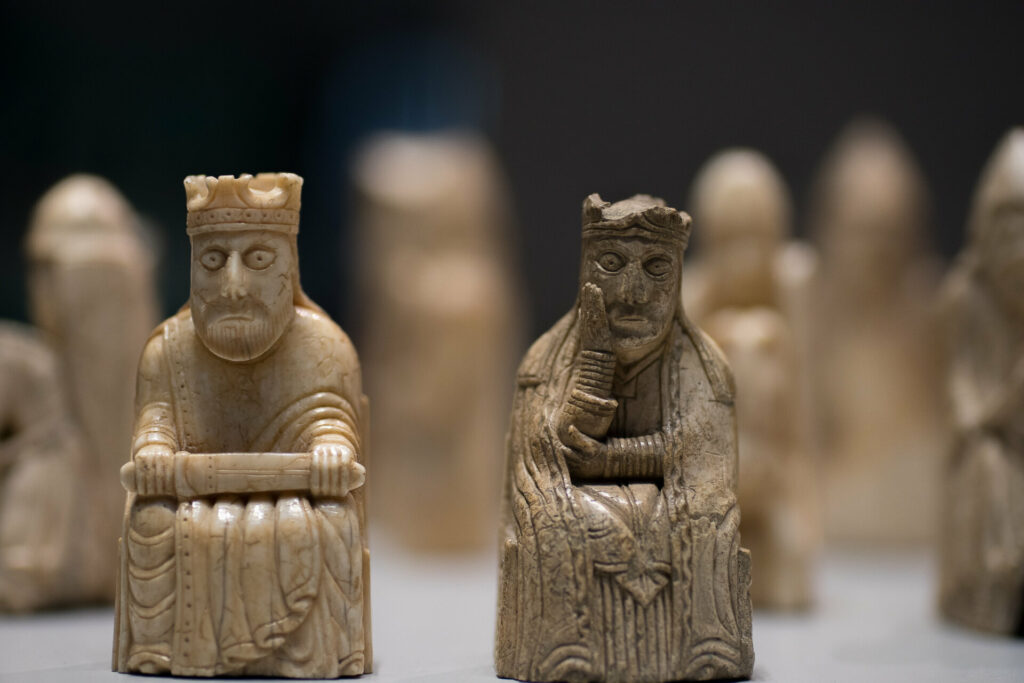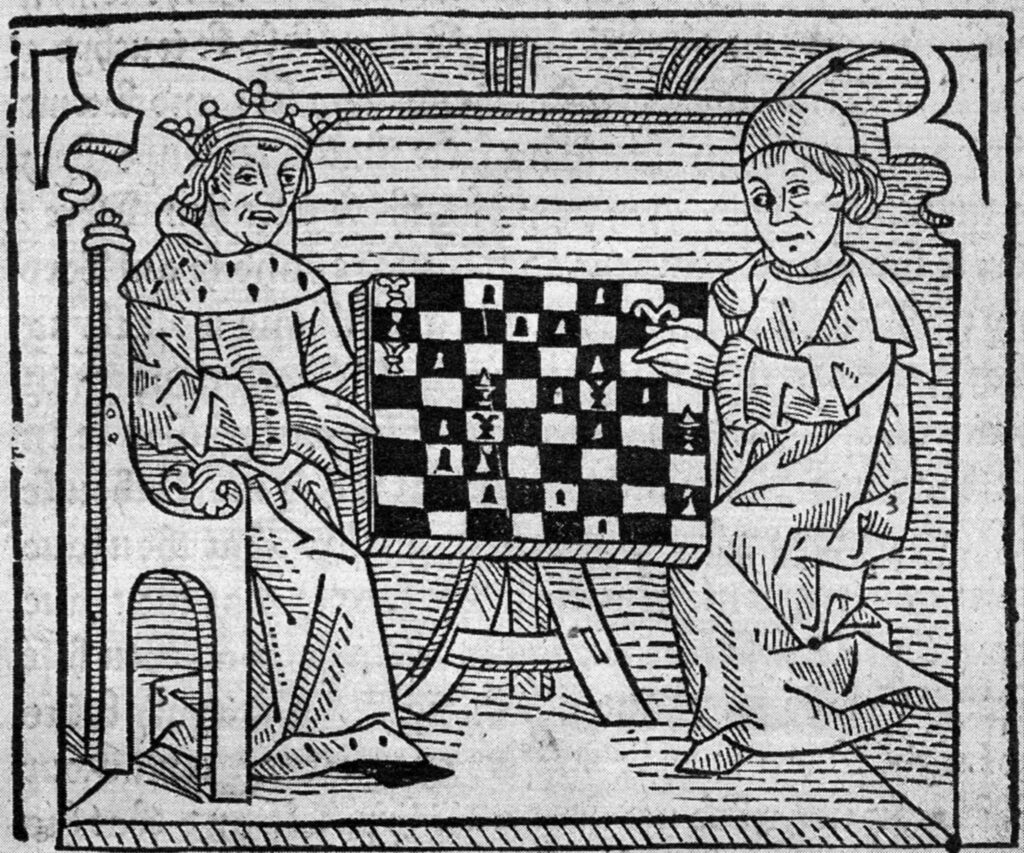The carved, tactile chess piece depicts a king riding horseback flanked by supporters forming a wide base to the piece, with an open crown of four trefoils over his shoulder length hair. The kings attire helped to date the object (with the help of the Royal Armouries) to the 13th century. It is the most impressive type of medieval chess piece found to date within The Salisbury Museum’s collection, and general analysis of art-historical evidence suggests that this style of chess piece was widely favoured, often made of antler, walrus, or ivory. The wide carved base of the Ivy Street Chess Piece also has a practical function, providing stability as it is moved around the chess board. This style of chessmen, with a central equestrian figure flanked by crowds, is predominantly German or Scandinavian in origin, which makes the matter of how it ended up in ivy street more intriguing. Other notable chess pieces of a similar style include the Lewis hoard from Scotland – containing 93 gaming pieces and at least four chess sets from the late 12th or early 13th century, likely from Norway.[i] Chess boards were also found by archaeologists during excavation in Scotland, and some even with grids carved into stone.




